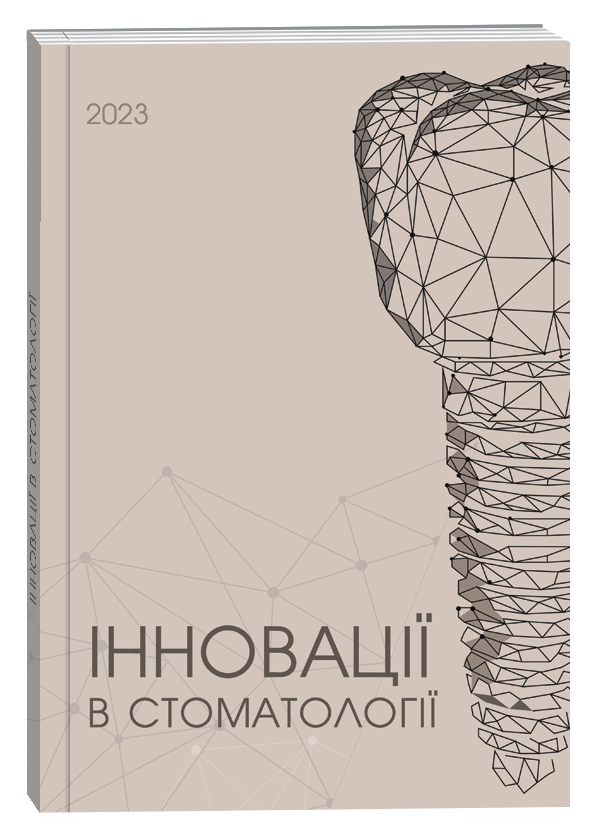EXPERIMENTAL EVALUATION OF THE BIOCHEMICAL INDICATORS OF RAT INCISOR PULP UNDER THE BACKGROUND OF MULTIPLE CARIES MODELING AND THERAPEUTIC AND PREVENTIVE MEASURES
DOI:
https://doi.org/10.35220/2523-420X/2024.4.6Keywords:
multiple caries, rats, carbohydrate load, experiment, biochemical markersAbstract
Excessive carbohydrate consumption, especially refined sugar, is associated with a significantly increased risk of dental caries, as evidenced by numerous experimental and clinical studies. Under conditions of excessive sugar intake and deficiency of certain micro- and macroelements, the cariogenic potential of the oral cavity intensifies. In this regard, there is an urgent need to develop and implement highly effective preventive and therapeutic complexes capable of preventing the formation of multiple dental caries and reducing the intensity and depth of existing lesions. Aim of the study. To evaluate the effect of a therapeutic complex of drugs on the biochemical parameters of rat incisor pulp under conditions of multiple dental caries modeling. Materials and methods. The study involved 30 one-monthold white Wistar rats (body weight 70±5 g), divided into three groups: an intact group (n=10); a group with multiple caries modeling (n=10); and a group with multiple caries modeling plus an additional application of the therapeutic and prophylactic complex (TPC) (n=10). Over a 60-day period, animals in the second and third groups were given a cariesogenic diet high in refined sugar to induce multiple caries. Rats in the third group additionally received the studied TPC. At the end of the experiment, the activity of acid and alkaline phosphatases in the incisor pulp was determined. Statistical analysis of the results was performed using the STATISTICA 6.1 software and Student’s t-test. Results. Animals that received the cariogenic diet without additional therapy showed a significant increase in both the quantity and depth of carious lesions compared to the intact group. In contrast, the group that was administered the PTC demonstrated a substantial decrease in the number and depth of carious cavities, as well as a relative restoration of the balance between acid and alkaline phosphatase activity in the incisor pulp. Conclusions. The proposed preventivetherapeutic complex effectively reduces the intensity of the carious process in rats with a multiple caries model and contributes to the restoration of mineralization indicators in hard dental tissues. The obtained data confirm the feasibility of developing and implementing this complex in dental practice to prevent and correct cariogenic changes in the oral cavity resulting from excessive intake of easily digestible carbohydrates.
References
Pupin T.I. Influence of fat-free, fat and sucrose diets on rat periodont condition. J Educ Health Sport. 2021. № 11(5). Р. 179-84. Available from: https://apcz.umk.pl/JEHS/article/view/JEHS.2021.11.05.018.
Pang L., Zhi Q., Jian W., Liu Z., Lin H. The oral microbiome impacts the link between sugar consumption and caries: a preliminary study. Nutrients. 2022. № 14(18). Р. 3693. doi: 10.3390/nu14183693.
Xiao TianMing, Xia Wen Wei. Cariogenicity of high fructose corn syrup: an experimental study on rats. Chin J Conserv Dent. 2013. № 23(7). Р. 446-9.
European convention for the protection of vertebrale animals used for experimental and other scientific purposes. – Strasburg.Council of Europe, 1986. 123. Р. 51.
Наказ України «Про затвердження Порядку проведення науковими установами дослідів, експериментів на тваринах». Міністерство освіти і науки України. 2012. № 249.
Ходаков І., Хромагіна Л., Макаренко О., Мудрик Л. Модифікація казеїно-сахарозної дієти М.С. Бугайової та С.А. Нікітіна (1954) для моделювання карієсу зубів у щурів. Вісник стоматології. 2023. № 1(122). С. 71-6. DOI: 10.35220/2078-8916-2023-47-1.12
Експериментальні методи дослідження стимуляторів остеогенезу / А.П. Левицький та ін. : методичні рекомендації. Київ : ГФЦ, 2005. 50 с
Рогач І. М., Керецман А. О., Сіткар А. Д. Правильно вибраний метод статистичного аналізу – шлях до якісної інтерпретації даних медичних досліджень. Науковий вісник Ужгородського університету. 2017. Вип. 2. С. 124-28.







